Here is some more Space Elevator miscellany, gleaned from the web over the past several weeks…
The website Next Big Future always has interesting posts and I subscribed to it long ago. This is a posting from this site from last January, talking about Alan Windle’s carbon nanotube ribbons. According to the article, he has created something which has been measured at 9GPa. If true, I sure hope he brings it to this year’s Strong Tether competition (being held at the Space Elevator Conference) – he would be a favorite to win.
This is an article, in French, about the Space Elevator Games and Space elevators, in general. If you parlez the Francais (sorry for my slaughtered translation), enjoy…
And then we have another article about a Space Elevator, this time in Vietnamese…
 One of my favorite sites, io9, has a posting about a new book with a Space Elevator as a backdrop, The Third Claw of God. This is the second in the series of Andrea Cort novels and io9’s review of the book says its a winner. I suppose you can find it at your local bookstore, and it’s available in paperback from Amazon for $7.99. It’s also available for Kindle and, as I’m lucky to have one, I’ve just downloaded it – I’ll start it on the plane-ride out to California next week. When I’ve finished reading it, I’ll post a review.
One of my favorite sites, io9, has a posting about a new book with a Space Elevator as a backdrop, The Third Claw of God. This is the second in the series of Andrea Cort novels and io9’s review of the book says its a winner. I suppose you can find it at your local bookstore, and it’s available in paperback from Amazon for $7.99. It’s also available for Kindle and, as I’m lucky to have one, I’ve just downloaded it – I’ll start it on the plane-ride out to California next week. When I’ve finished reading it, I’ll post a review.
.
In a recent speech to the Rensselaer Polytechnic Institute class of 2009, Futurist Peter Schwartz spoke of “…ten areas to make a Global Impact, find success” to help create a peaceful, prosperous world by the year 2050. “The final item on Schwartz’s list is discovering new ways to radically lower the cost and environmental impact of space flight, and developing new ways, such as a space elevator, to get into space.” I can only say “Amen” to that…
James Coughtrey has created an alternative world scenario entitled “Vast Worlds“. It’s driven by humans acquiring technology from a derelict alien starship. In this scenario;
The Chinese space elevator was the only one that was actually on the equator. Both the Commonwealth and AMA have theirs off centre for economic reasons. New Inca’s is placed further south to avoid American airspace, America doesn’t cross the equator and Russia doesn’t actually have a space elevator but an assisted floater rocket system.
I haven’t had a chance to review all of this, but it looks quite interesting…
Dave Barry recently opined on the Space Elevator here – most of his jokes about the elevator are a bit dated.
This is an interesting blog post concerning Space Based Solar Power. A constituent attended a congressional briefing by Mark Kirk (he represents the district next to mine) and asked him about his views on SBSP. Congressman Kirk identified one of the issues preventing the widespread use of it; i.e. the cost to orbit. The writer states that we should look at this issue in light of; “…the mass required to produce a kilowatt of electricity (kg/kw) and the total system cost to produce a kilowatt of electricity (cost/kw)“. I think this is correct, but alas, the writer didn’t supply his opinion of what this number should be. I’ve written before about my skepticism about the practicality of SBSP and gave my numbers here.
A related article about Pacific Gas & Electric (PG&E) purchasing electricity created by SBSP is here. Two companies are mentioned, Solaren and Space Energy. As I’ve said before, I’m skeptical if this idea can work – it’s a lot easier to make a website than it is to generate SBSP cost-effectively. I have no issues with the technology – I have serious doubts if we can generate enough electricity (we use so much of it) via SBSP to every make it worthwhile. But if you believe that the idea of SBSP is a good one, I think you absolutely have to support the idea of a Space Elevator – no other technology gives you a chance to get enought stuff into orbit, cost-effectively enough, to perhaps make this idea work.
No, I still haven’t seen the new Star Trek movie, but I’m very interested in seeing the Vulcan Space Elevator made of “…of metallic chunks the size of refrigerators.” Maybe after the Space Elevator Conference is over…
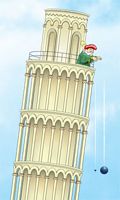 If you’ve ever wondered what would happen if you dropped balls (or other heavy weights) from a Space Elevator, here’s a discussion thread on the question.
If you’ve ever wondered what would happen if you dropped balls (or other heavy weights) from a Space Elevator, here’s a discussion thread on the question.
Enough for now – time to get ready to head out to NASA-Dryden for Round 2 of testing for the upcoming Space Elevator Games…
(Picture thumbnail of Galileo and his balls from here – click on it for a larger version).

 On August 8th and 9th, at the Nihon University Department of Science and Engineering at Kanagawa University, the first JSETEC (Japan Space Elevator Technical & Engineering Competition) competition will be held. This event is hosted by the
On August 8th and 9th, at the Nihon University Department of Science and Engineering at Kanagawa University, the first JSETEC (Japan Space Elevator Technical & Engineering Competition) competition will be held. This event is hosted by the 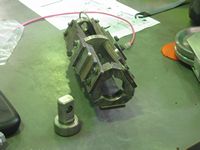
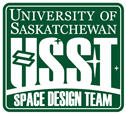 This is more like it! When USST showed up for the first round of testing, there were only four of them. I was quite disappointed, expecting their usual army. For this round of testing, however, they are here in force, 13 in all.
This is more like it! When USST showed up for the first round of testing, there were only four of them. I was quite disappointed, expecting their usual army. For this round of testing, however, they are here in force, 13 in all.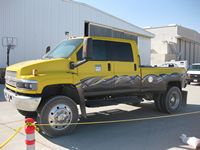
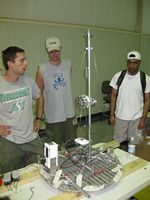 When I visited their work area yesterday, their climber was mostly assembled – you can see it here. However, you’ll note that they have nothing on there to hold payload (at least I didn’t recognize anything that could be used as such). When I asked what they were going to use (last year they had some tubes mounted to their climber), I just got some smiles and an offhand comment about “we’ll have something”. I’m sure they will.
When I visited their work area yesterday, their climber was mostly assembled – you can see it here. However, you’ll note that they have nothing on there to hold payload (at least I didn’t recognize anything that could be used as such). When I asked what they were going to use (last year they had some tubes mounted to their climber), I just got some smiles and an offhand comment about “we’ll have something”. I’m sure they will.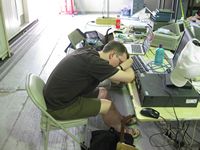
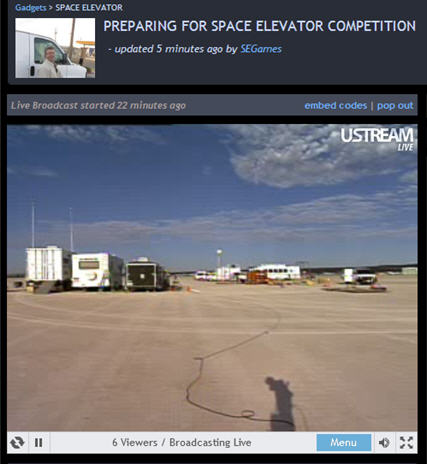
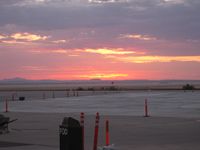
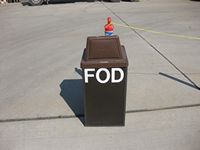
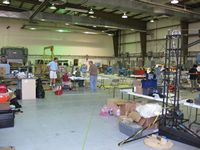
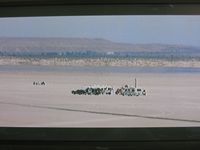
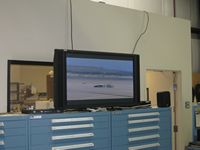
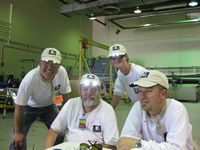

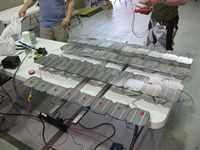
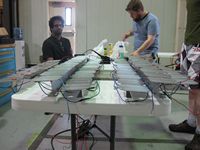
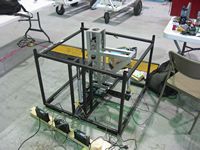

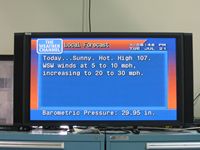

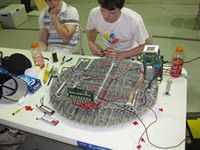 USST is now here in force – they brought a whole army with them this time – I’m going to see if I can get a group shot of them sometime (part of them are out on the lakebed right now doing laser testing).
USST is now here in force – they brought a whole army with them this time – I’m going to see if I can get a group shot of them sometime (part of them are out on the lakebed right now doing laser testing).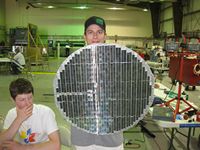 When they arrived late for the first round of testing, no one was very worried that they wouldn’t eventually be ready. They did get a lot done in the short time they were onsite and were provisionally cleared to compete. And, we all know that they are a force to reckoned with in these Games, having had the best performing climbers in the 3 previous Games. They are also the only team with a successful laser climb to the top of the competition tether under their belt – and they did it multiple times in a row.
When they arrived late for the first round of testing, no one was very worried that they wouldn’t eventually be ready. They did get a lot done in the short time they were onsite and were provisionally cleared to compete. And, we all know that they are a force to reckoned with in these Games, having had the best performing climbers in the 3 previous Games. They are also the only team with a successful laser climb to the top of the competition tether under their belt – and they did it multiple times in a row.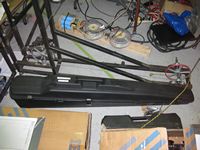 This third picture is my favorite – it’s the case they use to transport part of their climber in. It looks suspiciously like the case I use for my Mossberg 535…
This third picture is my favorite – it’s the case they use to transport part of their climber in. It looks suspiciously like the case I use for my Mossberg 535…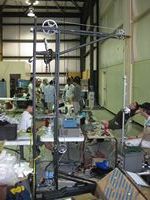 One more USST note; they’ve changed their website – the new location is now
One more USST note; they’ve changed their website – the new location is now 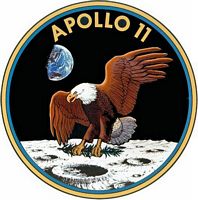 Forty years ago today, Neil Armstrong became the
Forty years ago today, Neil Armstrong became the  One of my favorite sites, io9, has a
One of my favorite sites, io9, has a 
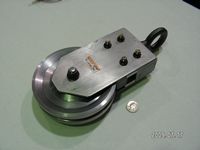
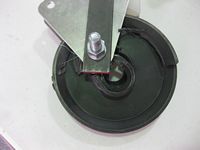
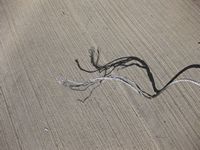
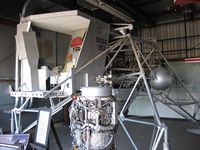
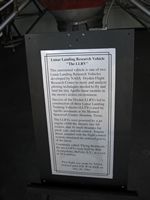
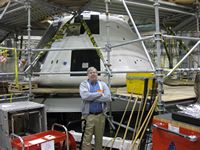
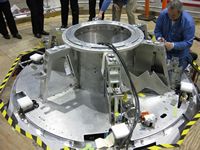
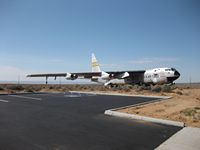
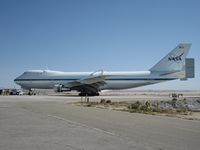
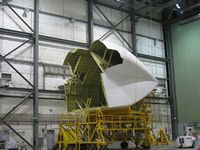

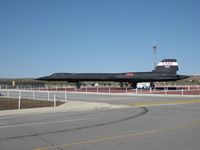
 Yes the technology is way cool – we’re going to watch Climbers powered by class-4 lasers ascend a kilometer long steel cable, at 5 meters/second no less, held aloft by a helicopter. All of this will happen at the NASA Dryden Research Center located at Edwards Air Force base – and then there is the small matter of the $2Million prize purse too… Who could view all of this and not be awed by the work and technology that has gone into making this happen?
Yes the technology is way cool – we’re going to watch Climbers powered by class-4 lasers ascend a kilometer long steel cable, at 5 meters/second no less, held aloft by a helicopter. All of this will happen at the NASA Dryden Research Center located at Edwards Air Force base – and then there is the small matter of the $2Million prize purse too… Who could view all of this and not be awed by the work and technology that has gone into making this happen?
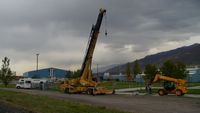
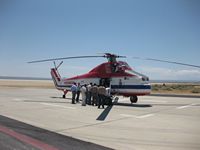
 At the 2007 Space Elevator Games, team
At the 2007 Space Elevator Games, team 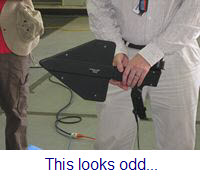
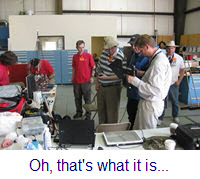
 Check out these posts that Ben has put up – they’re most informative and fun to read. He has several pictures included, some taken by him and a couple taken by yours truly. You might also want to read a couple of previous posts (
Check out these posts that Ben has put up – they’re most informative and fun to read. He has several pictures included, some taken by him and a couple taken by yours truly. You might also want to read a couple of previous posts ( I received this email today from Brian Turner, captain of the
I received this email today from Brian Turner, captain of the  On Friday, July 17th, the Space Frontier Foundation will kick off their NewSpace2009 Conference at the NASA Ames Research Center in Mountain View, California with
On Friday, July 17th, the Space Frontier Foundation will kick off their NewSpace2009 Conference at the NASA Ames Research Center in Mountain View, California with